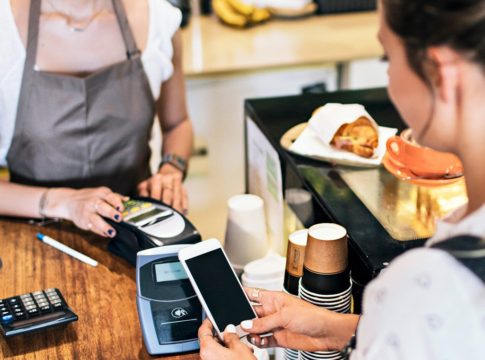Card-not-present debit transactions surged 21% year-over-year in 2019, according to a new study commissioned by Discover Financial Services’ PULSE® debit network and conducted by Oliver Wyman. The 2020 Debit Issuer Study found that one card-not-present transaction type – account-to-account (A2A) transfers using debit – is the fastest growing category of debit, doubling year-over-year and accounting for 40% of total debit growth.
These increases reflect growth in consumer use of debit to shop online, and to fund purchases and person-to-person transfers using apps such as PayPal, Venmo and Zelle. In addition, more business-to-consumer payments are being delivered via debit, including insurance payouts and payments to gig-economy workers such as drivers for ride-share services.
While the growth rate for card-present transactions was a more modest 2%, these transactions still represent 73% of all debit transactions.
“Debit is being used more often by more consumers, and in a greater variety of ways than ever before,” said Jennifer Schroeder, executive vice president of product management with PULSE. “This year’s Debit Issuer Study shows that, even before the COVID-19 pandemic, debit use was growing in digital-commerce channels. This growth was a key driving force behind the record 77.4 billion debit transactions that were made in the U.S. in 2019, up a very healthy 6.5% year-over-year.”
The study, based on a representative sample of U.S. debit issuers, determined that debit’s continued strength makes it more important than ever to financial institutions (FIs). Approximately 25% of non-interest income for community FIs now comes from debit interchange. Historically low interest rates, combined with debit’s resilience, makes non-interest income from their debit programs more important than ever.
Debit Continues Growing
Overall, debit transaction growth in 2019 was fueled by a combination of a 3.1% rise in transactions per active card, a 2.3% increase in the number of cards in market, and a 1.1% rise in the number of cards used at least monthly by the cardholder.
The study found that, on average, cardholders performed 25.5 debit transactions per active card per month in 2019, including purchases, bill payments and A2A transfers. Average ticket size increased to $40.50 from $39.70 in 2018, and the typical debit card is now used for $12,400 in annual spend, both of which represent record highs in the study’s 15-year history.
Mobile wallet payments using debit cards in 2019 jumped 94% year-over-year, reaching a record 1.3 billion transactions. Apple Pay accounted for approximately 1.1 billion (85%) of those transactions as it outperformed Samsung Pay and Google Pay, posting 100% growth year-over-year.
Pandemic Expected to Accelerate Trends
Changes in government guidance, business practices and consumer behavior in response to the COVID-19 pandemic are expected to accelerate the major shifts the 2020 Debit Issuer Study identified; namely, rising card-not-present activity and greater issuance and use of contactless debit.
“Card-not-present transactions already represent 27% of all debit transactions and are growing about 10 times faster than card-present transactions,” said Tony Hayes, a partner at Oliver Wyman and study principal. “That growth will surely accelerate due to a surge in e-commerce, and a shift in many traditional card-present merchant categories, such as grocery and restaurants, to remote card-not-present ordering.”
In addition to greater use of debit in card-not-present environments, the average ticket size for these purchases is considerably larger than a transaction made with a card. The average card-not-present transaction totaled $61.48 in 2019, while the average card-present purchase totaled $34.10.
The shift toward card-not-present transactions after the study period can be seen in PULSE Network volume data reflecting the impact of the pandemic, published periodically on PULSE’s Pandemic Response Resource Hub.
Even prior to the pandemic, issuers participating in the 2020 Debit Issuer Study cited offering contactless debit cards as their top priority. While 29% of respondents were issuing contactless debit cards to at least some cardholders at the end of 2019 (up from 10% at the end of 2018), another 37% expect to be doing so by the end of 2020.
Based on issuers’ stated plans in early 2020, 87% of debit cards are expected to be contactless by year-end 2022. Oliver Wyman expects the issuance, acceptance and use of contactless cards all to accelerate as a result of the COVID-19 pandemic, and contactless transaction volume to increase accordingly.





